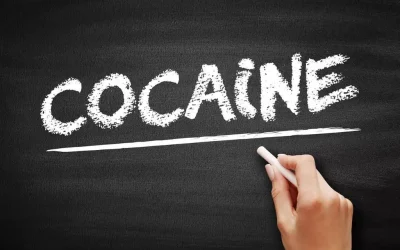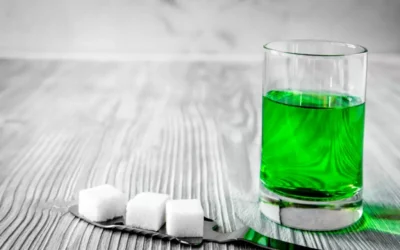But more research is required to determine the effectiveness of these techniques on addiction to cocaine. Cocaine addiction is a complex disease, with physical, mental, social, environmental, and familial factors. There are a variety of treatment methods for cocaine addiction that address all these components. When you use substances like alcohol or drugs over a long period of time, your body can develop a dependence on these substances. A cocaine addiction is harmful to a person’s body, mind, and wellbeing.
- According to the National Institute on Drug Abuse, around 68% of people seeking cocaine treatment regularly use crack cocaine.
- Cocaine has a fairly short half-life and withdrawal symptoms and cravings can start within a few hours of the last dose.
- These drugs may be effective treatment for several forms of substance use disorder.
- Compassion and a desire to help fellow human beings in need seemed to be missing from his approach to the drug and alcohol treatment center, though.
Treatment for cocaine: where to start

Potential relapse-prevention medications include GABAergic medications, such as baclofen, tiagabine, and topiramate, and the glutamatergic medication, modafinil. Surprisingly, an old treatment for alcohol dependence, disulfiram, may also have efficacy for cocaine relapse prevention. Finally, a vaccine capable of stimulating the production of cocaine specific antibodies has shown promise in preliminary studies for the prevention of relapse to cocaine use. Cocaine has a fairly short half-life and withdrawal symptoms and cravings can start within a few hours of the last dose.
- Your chances of getting HIV, the virus that causes AIDS, are higher if you use cocaine.
- Although the specific procedures of IOT vary from program to program, most IOT programs consist of a combination of group and individual drug counseling, along with varying degrees of family involvement.
- You might need counseling, supervision, and medication if you develop depression and suicidal ideation.
- You might receive treatment with a pharmaceutical drug if you have a co-addiction that can be treated pharmacologically, such as an addiction to alcohol or opioids.
Over-the-Counter (OTC) Medications Abuse & Addiction
In a post hoc analysis among patients who were not concurrently alcohol dependent, modafinil increased abstinence from cocaine compared with placebo (41). The efficacy of IOT treatment has been demonstrated in a number of clinical trials (6–8). What has not been established is the intensity of treatment necessary to support substantial reductions in CUD symptoms. Clinical trials suggest that treatments involving multiple sessions per week are more effective than those with one session per week. Both test groups experienced reduced drug use during the trial, with no differences in drug use between the two groups (9).
Behavior therapy
Tolerance to the drug develops and more and more cocaine is needed to achieve the desired effect. Cocaine, also known as coke, is a powerful stimulant derived from the coca plant. It is abused by several methods, including snorting it through the nose, smoking it, and injecting it intravenously. Support systems such as friends, family, treatment facilities, and other people recovering from addiction, can help you push through this phase. The organization Cocaine Anonymous offers resources and a community for people recovering from cocaine addiction. Even when withdrawal symptoms have subsided, sudden cravings are common.
Study sheds light on how cocaine addiction alters brain’s reward system – News-Medical.Net
Study sheds light on how cocaine addiction alters brain’s reward system.
Posted: Wed, 25 Oct 2023 07:00:00 GMT [source]
In this trial, neither topiramate nor CM was effective in reducing cocaine use. There was no significant difference in cocaine abstinence between the topiramate and placebo-treated groups or between the CM-treated and the non–CM-treated groups. In addition, all subjects received brief behavioral compliance enhancement treatment (BBCET). Primary outcome measures included cocaine abstinence, verified by urine drug screens, and treatment retention.
- You may develop thinning or deterioration of the septum nasi (the septal cartilage in your nose) if you snort the drug.
- Loved ones may notice a decline in work production or a slide in school grades.
- These programs are generally more flexible, although they require a tight support network focused on treatment and recovery.
- Treatment for cocaine addiction involves detox, medications, and therapy, and it works best with support from family, friends, and professionals.
- A person may also overdose on crack cocaine, especially if they mix it with alcohol or heroin.
This cycle can lead to cocaine use disorder, in which you have trouble controlling how much and how often you use the drug even when it has negative effects on your life. Cocaine, especially crack cocaine, is strongly cocaine addiction treatment addictive for several reasons. For one thing, the high feels very pleasurable, especially when you first try it. So you might keep taking the drug to prolong the good feelings and put off the unpleasant comedown.

Secondary outcomes included medication adherence, safety, cocaine and other substance use, health, social functioning, and patient satisfaction. In the intent-to-treat analyses, topiramate neither improved treatment retention nor reduced cocaine and other substance use (66). Both CBT and standard drug treatment require a great deal of infrastructure support for treatment providers, and transportation to the treatment site may also be difficult for some patients. Using therapists trained in CBT may be difficult for many programs. At least one computerized version of CBT has been shown to be effective for the treatment of CUD.
Substance Abuse Treatment Programs
Treatment retention was poor in all groups, with fewer than 50% of the subjects completing the trial. Both groups received methadone and diacetylmorphine (heroin-assisted treatment) (30). Treatment retention was good, with 89% of participants completing the trial. Sustained-release dexamphetamine–treated subjects reported, on average, fewer days of cocaine use compared with placebo-treated subjects (45 days versus 61 days). In addition, dextroamphetamine-treated subjects were more likely to be abstinent for three consecutive weeks compared to those receiving placebo. No serious adverse events occurred in dexamphetamine-treated subjects.
- Food and Drug Administration (FDA) available for either cocaine detoxification or longer-term treatment of cocaine use disorders.
- Once the detox process is complete, you will then attend individual and group therapy sessions and educational lectures and learn how to live without cocaine.
- Under a factorial design, participants received either topiramate or placebo, and monetary voucher incentives that were either contingent (CM) or non-contingent (Non-CM) on drug abstinence.
Ongoing treatment
An in-depth look at the signs and symptoms of cocaine addiction, how to get help for your loved one, and what treatment options are… Prolonged cocaine use can negatively affect mental health and psychological well-being. While high on cocaine, some individuals feel energetic, alert and talkative while others feel anxious and on-edge. During this time, a person might feel depressed or suicidal, anxious, paranoid or psychotic, and crave more of the drug. After prolonged use, individuals can become tolerant to the effects and “binge”—taking more and more of the substance to keep the high going—for hours or even days. Crack is typically smoked in a pipe or sprinkled on marijuana or tobacco and smoked like a cigarette.